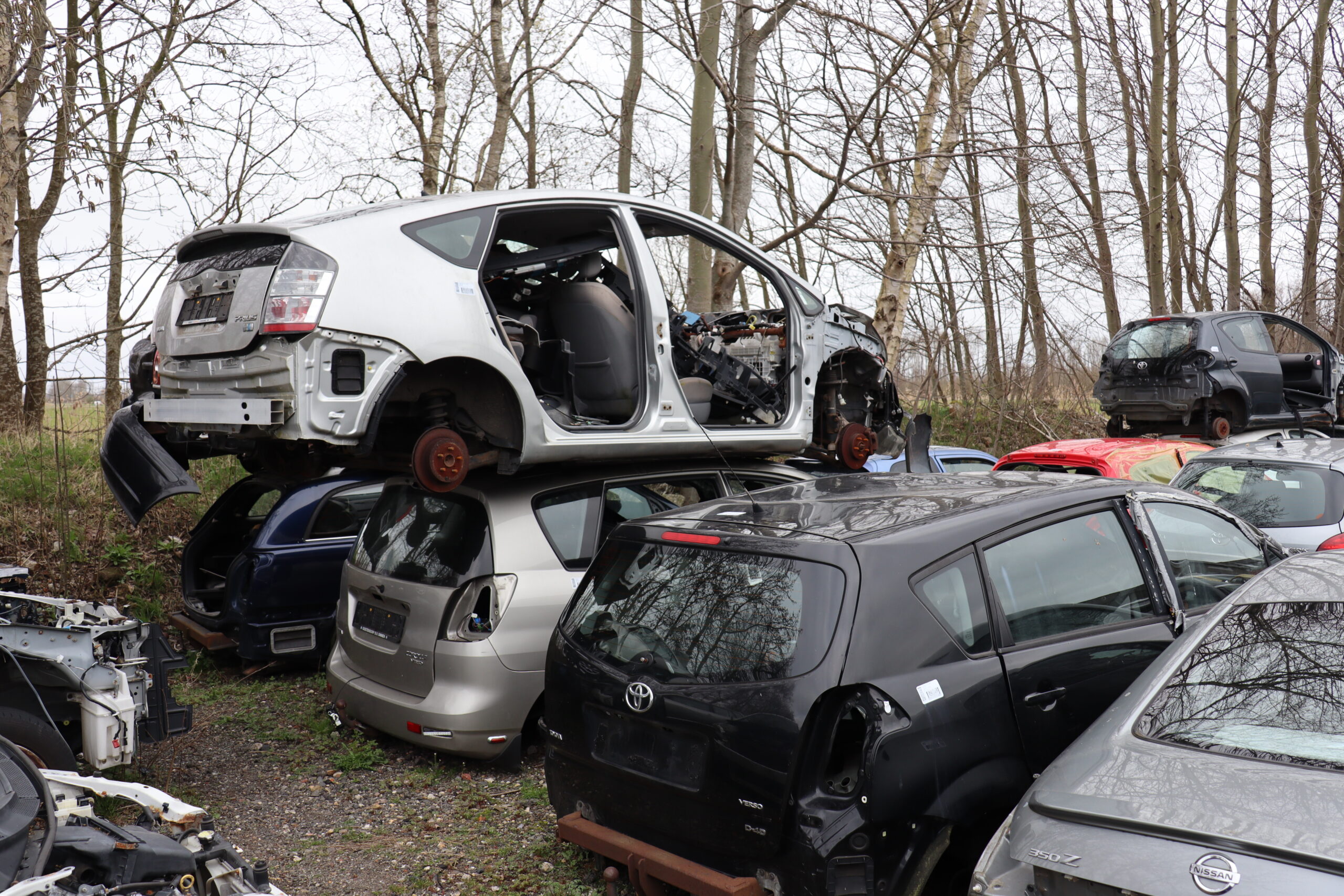Carbon black is perhaps the most successful of all reclaimed materials in the auto recycling industry. This raw material, which is extracted from discarded car tyres, can compete in price and quality with the ‘virgin’ material. Sometimes it is even better than the original.
Tekst Arjen van der Sar
Fotografie Black Bear Carbon
The Black Bear factory in Nederweert, built in partnership with tyre recycling firm Kargro, reclaims carbon black from car tyres. This dry powder is created by burning mineral oil or gas in an oxygen-free environment and that makes the black colour of car tyres, contributes to the wear resistance of tyres and combats the degradation of rubber by ultra-violet radiation. The substance is also used outside the tyre industry, in particular as a black pigment in plastics, explained CEO Martijn Lopes Cardozo.
What is innovative about your process?
“We reclaim the substance from car tyres using a technology that we call carbonisation. When tyres are burnt without oxygen, the rubber components evaporate and carbon black is left behind. It is possible to extract around three kilos of the substance from each car tyre. We are now able to say that we have a proven basic technology, and the operation of the factory is steadily improving. However, it is still a challenge to make the process even more efficient and to further improve the quality. Each tyre uses around ten to fifteen varieties/grades of carbon black, and we are currently able to make around six using the granulated materials from the tyres supplied to us by Kargro. This allows us to serve around 40 percent of the market.”
What is the quality like?
“We have been able to convince one hundred industrial parties about the quality of our reclaimed carbon black. AkzoNobel uses it to produce their powder coatings. Our product is a strong competitor in the area of eco paints. Apart from the fact that our product is of the highest quality, it has a favourable CO2footprint which is a great way for manufacturers to source their raw materials in a greener manner.
Who buys your carbon black?
“To mention just a few sectors: car tyre, paint, rubber and plastics manufacturers. It is used for the following applications. The first is to give structure to rubber, such as a hose or conveyor belt. The second is to give a rich black colour to products such as paint, ink or plastic. Our product can be used in all these applications.”
Can reclaimed carbon black compete with ‘virgin’ carbon?
“It certainly can! Moreover, some varieties are better than the original since they are stripped of carcinogenic particles during processing. These so-called PAHs or polycyclic aromatic hydrocarbons occur naturally. Our carbons contain almost none of these particles. This is preferable for products that will be handled by humans, such as the rubber hand grips on your bike.”
And the price?
“Our price is the same as the brand new alternative. However, our product is more sustainable, greener and cleaner.”
So, what is stopping you from growing?
“We are growing for sure, but don’t forget that the car industry – which accounts for 80 percent of the applications of our black carbon – can be slow at adopting new things.”
So, they have to see it to believe it?
“Actually, it is more a case that they have to see it, test it for years, and then they believe it. Tyre manufacturers can take ten years to go from the initial concept to actual production. In the meantime, we have to show that our product has maximum stability and quality. We have no problem with this. However, we would like to speed up the process because we are so enthusiastic about our product.”
If reclaimed black carbon really does break into the industry, what is your supply capacity for meeting a huge demand?
“Our factory in Nederweert can process granulated materials from a million tyres each year. That yields around five kilotons of carbon black. To be able to process the one and a half billion tyres that enter the waste stream each year, we would need to build around five hundred factories with this technology and capacity.
Once again, what is holding you back?
“There is worldwide interest. We are working hard on raising funding, in addition to the sixteen million euros that we recently secured from investors such as ING, Social Impact Ventures and Capricorn. Our aim is to roll out our technology internationally.”
Which countries are you focussing on?
“Our preference is to roll out in Europe first. There are enough tyres to build hundreds of factories. Furthermore, we want to be closely involved with the construction and operation so that we can learn as much as possible and effectively assimilate all the improvements. To have real impact, it is important to have a modular, scalable model.”
Are there any bottlenecks?
“Many parties are actively interested in getting to work with our patented technology. However, many are also waiting to see which way the wind blows. The courage and financing for these sorts of projects take a lot of perseverance. In that regard, I really have to complement Kargro for the vision and daring they have taken with us and to be the first tyre collection company in the world. I see a parallel here with the development of wind turbines. Initially, it was very difficult to get off the ground. However, ten years later and wind farms are being constructed in the North Sea without any subsidies.”





